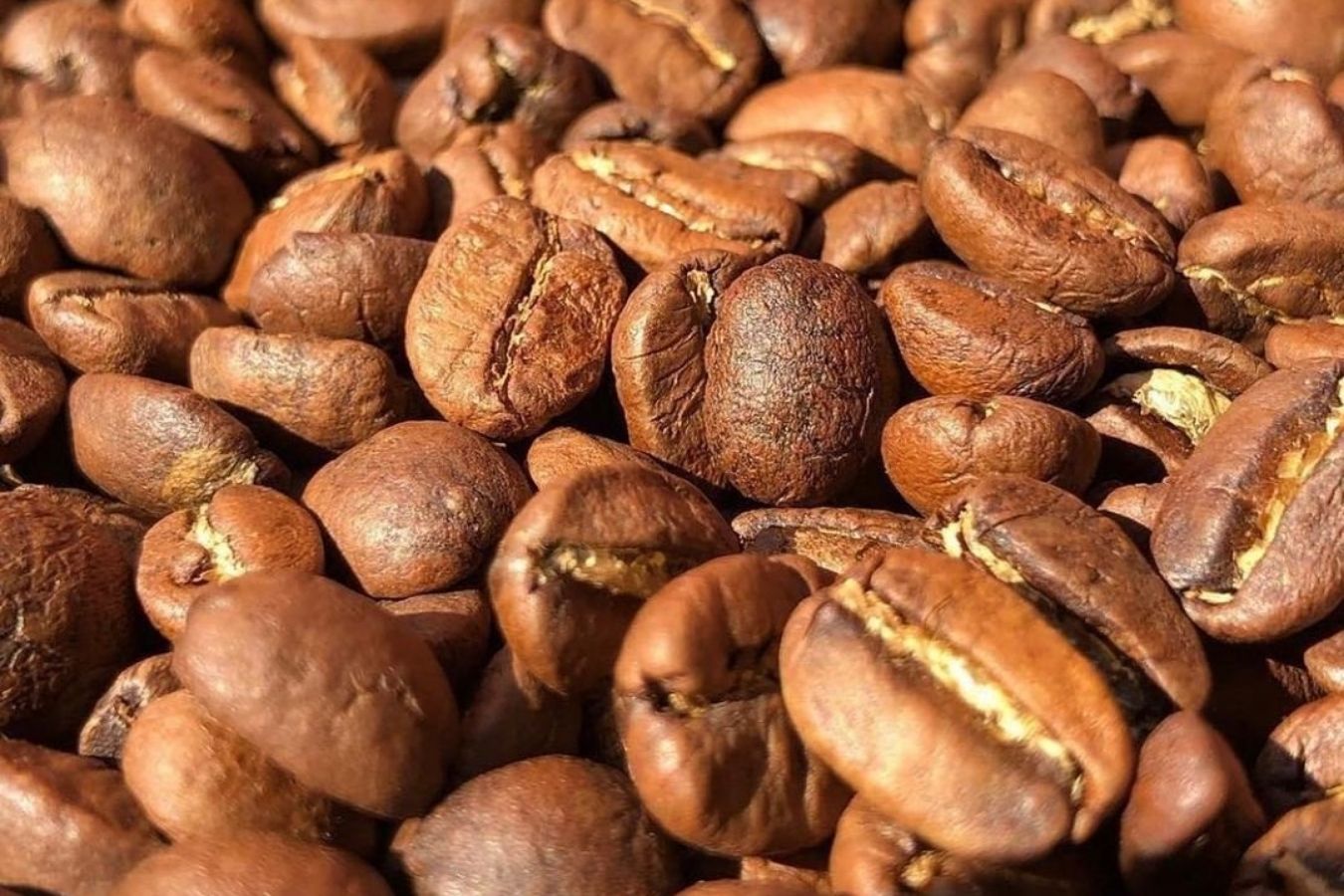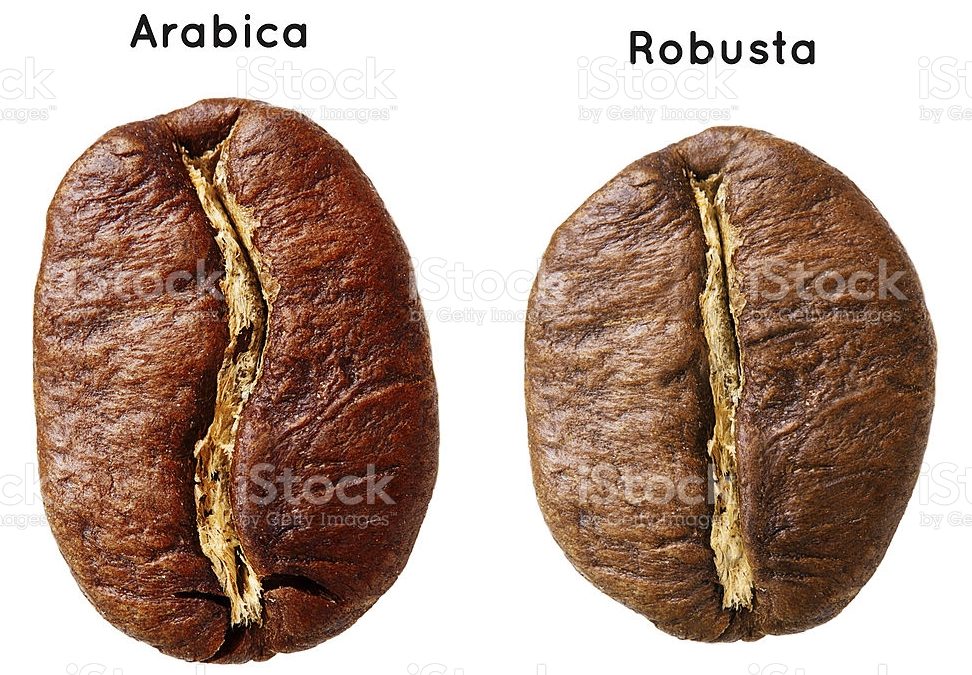
1. Arabica coffee
Its origins can be traced back to around 1,000 BC in the highlands of the Kingdom of Kefa, which is now Ethiopia. The Oromo tribe ate the bean, crushed it, and mixed it with fat to make ping-pong-sized spheres in Kefa. The spheres were consumed as a stimulant, similar to how coffee is consumed today.
Arabica coffee takes about seven years to fully mature. It grows best at higher elevations but can also be grown at sea level. The plant can withstand cold temperatures but not frost. The arabica plant produces small, white, highly fragrant flowers two to four years after planting. The sweet fragrance is reminiscent of the sweet scent of jasmine flowers.
Berries begin to appear after pruning. The berries, like the leaves, are dark green until they begin to ripen, turning yellow, light red, and darkening to a glossy, deep red. They are now referred to as “cherries” and are ready for picking. The berries’ prize is the beans inside, which are usually two per berry.
Arabica coffee is also known as tea coffee. Here is a favorite Western drink of the person, partial for its mild taste, not bitter, partisan for its specific aroma.
Address Special
Arabica is grown at an altitude of 800m and above; the climate is in harmony with the temperature from 15-24 degrees Celsius, raised on the element in Brazil.
Same as Kernel format
Picture oval, in the middle of the S notches.

Colorful
If roasted at the same temperature, Arabica will have a lighter color.
Smell
Caffeine content is from 0.9-1.7%, so drinking relatively lightly will only help you stay awake, not to the point of increasing the tempo. Arabica has a specific taste that is mildly sour and slightly bitter.
How to produce
After harvest, coffee beans are fermented from 24h-36h to create a specific sour taste, and then roasted coffee beans are roasted out of heat height for aroma.

2. Coffee beans
Voi coffee is the favorite coffee of Vietnamese people because the bitter characteristic of this coffee gives users a feeling of refreshment and enjoyment.
Address Special
Robusta is grown at an altitude of 900m or more, with a thermal climate of 18 – 36 degrees Celsius, most produced in Vietnam.

Same as Kernel format
Bead-shaped round, in between grooves and straight lines.

Color
If roasted at the same temperature, Robusta coffee will have a darker color.
Smell
Caffeine content is from 1.8 -3.5%, so the taste is rich and passionate; in addition to keeping the mind awake, it can increase heart rate and blood pressure. Robusta has a bitter characteristic, the position of aromatic coffee.
How to produce
Coffee beans, after being harvested, will be roasted at high temperature for about 15-20 minutes so that from the inside of the kernel, it will have a more fragrant aroma.

Robusta coffee beans
Given that there are over a hundred species of coffee, robusta has done well to become the world’s second most popular coffee.
So let’s examine what it is and where it came from.
What exactly is robusta coffee? Robusta coffee is a type of coffee made from the Coffea canephora plant’s beans (seeds).
Robusta originated in sub-Saharan Africa’s central and western regions. It is the world’s second most popular coffee, accounting for 40% of global coffee production.
It is only second to arabica (from the Coffea arabica plant), which accounts for the remaining 60% (or more) of global coffee production.
Caffeine, robusta, and chlorogenic acids
Robusta’s increased caffeine content, along with its chlorogenic acids (naturally occurring antioxidants), is thought to be a result of the plant’s self-protection mechanism in warding off pests and disease. Chlorogenic acids are considered an important part of a coffee’s flavor profile when present in low levels.
However, Robusta contains higher levels of these acids, and the oxidation products produced by these acids can occasionally introduce undesirable flavors, potentially compromising cup quality.
Arabica coffee beans
Despite having less caffeine than Robusta, Arabica beans are often thought to be more flavorful. Arabica coffee has a smoother, sweeter flavor with chocolate and sugar notes. They frequently contain hints of fruits or berries. Conversely, Robusta has a more robust, harsher, and bitter flavor, with grainy or rubbery undertones.
According to the International Coffee Organization, Arabica cultivators account for more than 60% of global coffee production. This was the type of bean that started the Ethiopian coffee story, and it still grows best at higher elevations. Arabica flowers are fragrant and appear only after a few years, producing ellipsoidal fruits with two flat seeds known as coffee beans inside.
An Arabica shrub can grow up to 15 feet (5 meters) tall, but it is usually pruned to 6 feet (2 meters) to make it more commercially viable. Arabica has two sets of chromosomes, allowing it to self-pollinate. Because cross-pollination is less likely, it remains generally stable as a species.
Growth of Arabica vs. Robusta beans (taste)
The Robusta bean has several subtypes, each with its own set of characteristics. The same can be said for Arabica beans. Robusta varieties sometimes exhibit greater immunity to disease and increased production capacity in comparison to Arabica. Robusta thrives in areas where Arabica would be destroyed by fungus, other diseases, and pests because it grows well at lower altitudes.
Robusta is a larger plant roughly twice Arabica’s size, thrives in higher humidity. The berries take nearly a year to ripen after flowering. Because Robusta is self-sterile, cross-pollination by wind, bees, and other insects is required for the plant to reproduce.
3. Conclusion (coffee)
If you are a person who likes lightness, without being too bold, Arabica will be your drink.
But if you are a solid and exaggerated person, you will love the intense bitterness of Robusta coffee.
Since each coffee bean has its flavor profile tailored to its personality, it is impossible to judge better.
The above is the basis of information about two types of coffee, Arabica, and Robusta, to track and compare these two types of coffee quickly. Hopefully, the article has provided you with the most helpful information.
>>> How to distinguish between Arabica and Robusta coffee, which is better?


